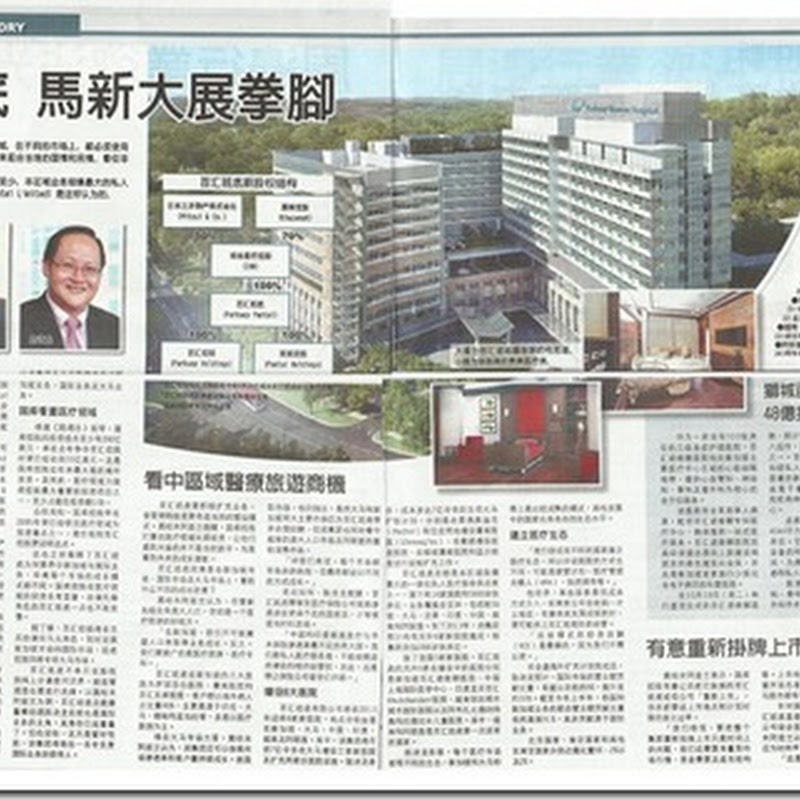The banding together of three companies from Tan Sri William Cheng’s Lion group to drive a multi-billion ringgit blast furnace is seen as a risky venture for the group although it would add value to its flat steel segment.
The blast furnace would convert 75% of the liquid hot metal into slabs to be exported to Asean, the remaining 25% would be channelled to Lion group’s steel making facilities in Banting, where the plant would be located. ]
While the blast furnace project would add value to Lion Diversified’s flat steel segment, it still posed a high investment risk to not only the individual companies but to the group overall in general.
While there is strong demand for steel coming from countries such as Indonesia, there are a number of risks attached to having a blast furnace.
Indonesia at the moment is a very unique market given that there is a smooth supply of raw materials with a high demand for steel. The demand in Thailand is also high, and there is no question that currently there is a shortage of supply in the slab market.
However, a blast furnace is a massive undertaking, in the sense that once it has been started, production cannot be stopped. To do so would then take about a month and millions of ringgit in order to ramp up the facility again. Ultimately this means that if there were a slowdown in demand, the blast furnace would have to keep producing, which would then lead to high inventory costs.
The industry player also pointed out that there were already other projects in the pipeline that would help to fill the need for slabs, including an integrated flat steel facility from a joint venture between South Korea’s Posco and Indonesian government-owned PT Krakatau Steel.
Given that mainly it is hot strip mills that use iron slabs, the millers are able to react quickly to market changes, halting production when the market goes south. While steel mills can opt to reduce production while keeping the blast and coke furnace warm, this will eventually translate into unreasonably high conversion cost. Also, this would also be done at the expense of a furnace’s lifespan, hence giving rise to maintenance and depreciation expenditure.
Another sticking point would be the fact that blast furnaces require a high amount of coking coal as a fuel source. At the moment, the prices of coking coal have spiked due to flooding in Australia, which had severely curtailed production.
In fact, mining giant BHP Billiton suggested that coking coal prices be revised monthly, a call that had been greeted with an outcry on the part of steel players who said that such short-term changes would make it hard for steel companies to manage costs and forecast earnings.
However it will add value to the former’s sister company Megasteel Sdn Bhd in the production of hot-rolled coils. Ultimately, Megasteel would benefit since it currently has an issue with inconsistent quality as it uses a scrap metal that has impurities as a feed material. Being able to process raw iron ore compared with the more impure scrap means that the companies will be able to command better margins through higher value products.
In addition, Lion Diversified also has a direct reduced iron plant in Banting, which was commissioned in June 2008. Direct reduced iron proves a direct substitute for scrap in the making of high-grade steel.
There should be no short-term financial impact but said that it would likely affect sentiment.
The move by the Lion group to ensure the completion of the blast furnace project is just another sign that the local steel players are steadily moving upstream.
In October 2010, Perwaja Holdings Bhd announced that it was looking to invest RM201.5 million in a new concentration and pelletising plant in Kemaman, Terengganu. The plant is due to be commissioned by the end of FY12 with a starting annual production capacity of 1.2 million tonnes a year. Perwaja and other steel makers in the region import all their iron ore pellets.
Ann Joo is also en route to the full commissioning of phase 1 of its own blast furnace, which was due to take place at end-2010, but there have been additional delays. The cold commissioning of the blast furnace, which was delayed up to two years, started in October 2010.
荒谬的GDP!
-
若一个国家以一年财政收入为基础來借贷,它可能是佔收入的30%至50%。例如美国2024年收入是4,9万亿美元,再借1,8万亿美元。那是入不敷出,赤字高达36%。但它们就以GDP
29.2万亿美元为基础,那只是6%。
以上只是一个比例,其实全世界政府都这样做。
大家想一想,若一个家庭五口,有二人工作。以GDP...
23 hours ago





















































No comments:
Post a Comment